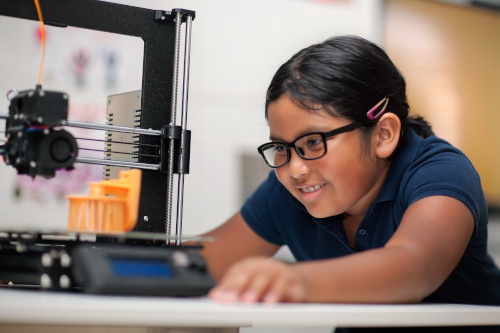Providing an engaging and equitable STEM education is an important step in helping to develop more scientists and engineers while increasing race and gender diversity in the field–both of which are much needed in today’s world. Education in STEM can also help develop a STEM-literate citizenry.
While there are many nuanced definitions for STEM literacy, the basis is that STEM-literate individuals are able to apply STEM concepts to identify, understand, and solve problems in the world around them, whether or not these problems are scientific in nature. STEM-literate individuals are able to think in a scientific-minded way about issues that impact their life and the community as a whole.
As educators, helping students understand the importance and benefits of STEM literacy – and how science impacts so many facets of their everyday lives – is an important responsibility.
Making real-world connections
COVID-19 is a glaring example of something that impacts everyone’s day-to-day life. With so much anecdotal information or misinformation about the virus, it is also a prime example of the need for STEM literacy and offers a good STEM-focused learning opportunity for students.
Having a knowledge base on the science behind the virus–and viruses in general–is critical as it helps students (and adults) understand what exactly the virus is, how it transmits, and how it can be stopped. This understanding also helps eliminate bias or opinion when talking about the virus as conversation is grounded in scientific fact. Offering opportunities to learn about this prevalent topic, and to gather and analyze science-backed information, will in turn help students make more informed personal decisions when it comes to hygiene, wearing a mask, and getting vaccinated.
Whether it is teaching about the pandemic, global warming, or another present-day issue, students learn best when they are able to make real-world connections. Providing ongoing and tech-enabled opportunities for students to research topics, participate in fact finding, and engage in critical thinking and classroom discussion helps students better understand what they are learning–all while building their STEM literacy.
Preparing for college and careers
Developing students’ STEM literacy not only impacts public health and environmental issues, but it also provides students with the skills they will utilize later in life, such as problem solving, working in groups, effectively communicating information, and more. All of these skills, which can be cultivated through ongoing STEM learning opportunities, will set students up for success in college and in their careers, regardless if those careers are in the STEM fields or not.
The National Science Teaching Association further underscores this notion and the importance of STEM literacy, stating “a STEM-literate populace and workforce is necessary to sustain the U.S. competitive advantage in the age of globalization–not only as researchers, doctors, and engineers, but also as a hugely technical workforce that can help secure our health and safety, revitalize our utility infrastructures, monitor our food production, and improve our manufacturing efficiencies and capabilities.”
Finding ways to make STEM learning an embedded, everyday part of the learning experience–across curricula areas and beyond just dedicated lab time–will help students start to think in a scientifically-minded way, apply science concepts to other facets of their lives, and develop the critical life skills. It will additionally help capture the imagination and interest of a larger, more diverse group of students wanting to pursue careers in science and engineering, which will be a benefit to us all.
This is the first article in a series from John Wheeler about STEM literacy and how to teach it in today’s classrooms.
- Why STEM literacy is critical for our students - September 28, 2021
- A guide to choosing the right edtech partner - April 14, 2021

